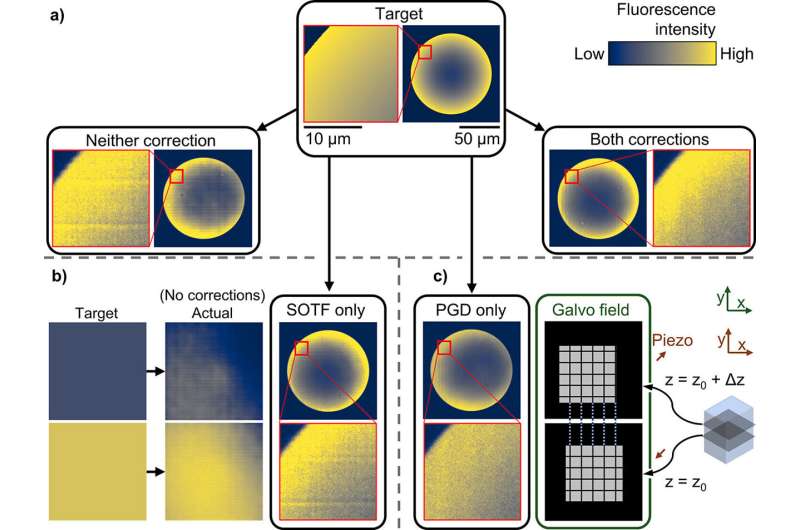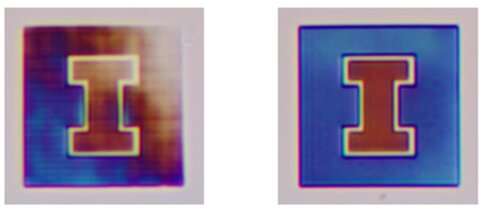This article has been reviewed according to Science X's editorial process and policies. Editors have highlighted the following attributes while ensuring the content's credibility:
fact-checked
peer-reviewed publication
trusted source
proofread
New procedure allows micro-printing inside existing materials with greater accuracy

3D printers form objects by layering melted plastic or metal, but this only works on large scales. What you need to fabricate microdevices for which the layering step is not feasible? What if it were possible to print directly into the bulk of an existing three-dimensional material?
The research groups of Lynford Goddard and Paul Braun, professors at the University of Illinois Urbana-Champaign, have been collaborating to develop such a process. They use the technique of multiphoton lithography to print inside an existing porous material with high intensity laser light.
This allows the researchers to selectively modify regions of the interior and manufacture custom small-scale optical devices in a procedure called subsurface controllable refractive index via beam exposure, or SCRIBE. The two research groups recently announced a refinement to this procedure that gives them significantly tighter control over the resulting devices. The new procedure was recently published in ACS Photonics.
"We were able to show an improvement from a baseline of 36% to a new value of 49% in the efficiency of fabricated lenses and a clear improvement in the color uniformity resulting from the 2D line gratings we made," said Alexander Littlefield, a graduate student in Goddard's group and the study's lead author. "We believe that this new technique will open the door to a vast array of optical element designs."
SCRIBE is a form of multiphoton lithography that depends on a mechanism called two-photon absorption. The researchers use silicon that has been etched to have microscopic pores and oxidized into transparent silica. They then fill it with a material called photoresist, which can undergo a chemical process by which it changes its optical properties only when it absorbs two photons simultaneously—a process that is quite rare unless very intense light is used.
The researchers take advantage of this by focusing laser light to create high intensities only in specific regions. This allows them to create custom designs for the material's optical properties in three dimensions to "write" optical components.
Past versions of SCRIBE were limited by imperfect control of the laser's intensity. To address this, the researchers present three improvements to the technique in their article.
First, they use a two-photon fluorescence imaging system to map the photoresist's density and correct the laser power needed for the desired result. Second, they smooth out errors that are especially prominent near the writing boundary by modulating the material's position as the laser writes. Finally, they introduce a time delay between laser exposures to minimize time-dependent effects in the photoresist interaction.

By incorporating these three improvements, the researchers achieved tighter control over their patterned devices, achieving more precisely fabricated components that are much more effective. To demonstrate the versatility of their method, they fabricated a 100-by-100-micrometer optical device that alters light to form specific color patterns, a line grating, that reproduces the shape and colors of the UIUC logo.
"Our work shows that multiphoton lithography can now accurately fabricate microscale optical components with new capabilities that do not yet exist for other fabrication methods," Goddard said.
More information: Alexander J. Littlefield et al, Enabling High Precision Gradient Index Control in Subsurface Multiphoton Lithography, ACS Photonics (2023). DOI: 10.1021/acsphotonics.2c01950
Journal information: ACS Photonics





















